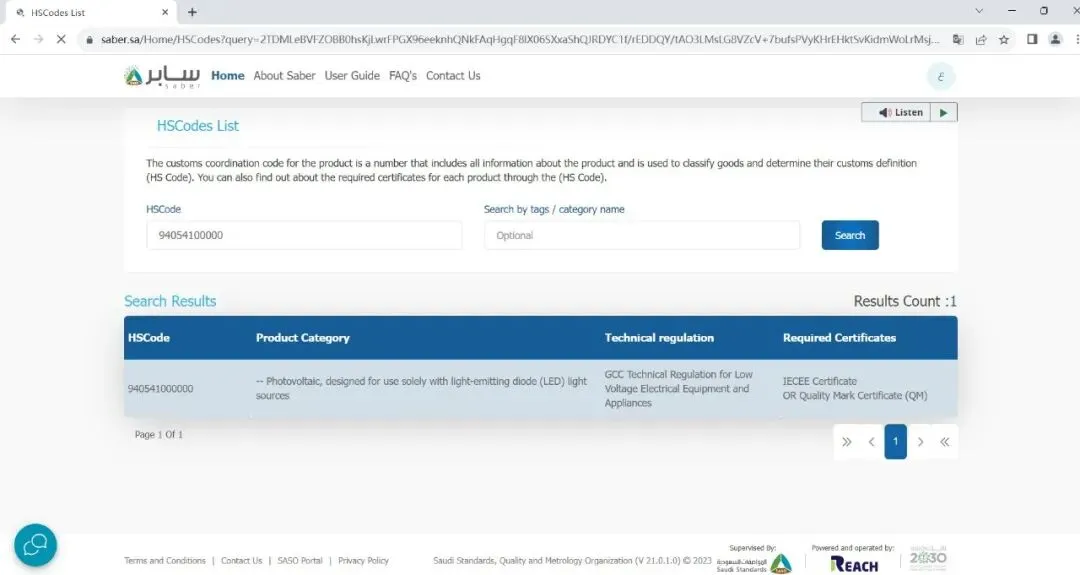
EMC, Safety, and Environmental Testing Items
emc testing
The fULl name of EMC test (electromagnetic compatibility test) is ElectroMagnetic Compatibility, which is defined as "the ability of equipment and systems to work normally in their electromagnetic environment without causing unacceptable electromagnetic disturbance to anything in the environment." EMC includes two aspects: on the one hand, the equipment should be able to work normally in a certain electromagnetic environment, that is, the equipment should have a certain electromagnetic immunity (EMS); secondly, the electromagnetic disturbance generated by the equipment itself cannot affect other Electronic products produce excessive impacts, namely electromagnetic interference (EMI).
The test items of EMS are as follows:
1) Electrostatic discharge immunity (ESD);
The test is based on the standard IEC 61000-4-2 Criteria B. The purpose of the test is to verify the ability of a single device or system to resist electrostatic discharge interference.
Test principle: ESD experiments simulate the electrostatic discharge generated by the human body or objects when they come into contact with the equipment, or the discharge of the human body or objects to adjacent objects, including damage to the device caused by direct exchange of energy or near fields (electric and magnetic fields) caused by discharge. changes), causing malfunction of the equipment.
2) Radiated electromagnetic field (80MHz~1000 MHz) immunity (RS);
The standard the test is based on is IEC 61000-4-3 Criteria A. The purpose of the test is to test the ability of a single device or system to resist electric field interference. The test waveform is as follows:
①Frequency range: 80MHz-2.5GHz,
②Modulation method: 80% AM, 1kHz sin-wave
③Frequency step size: 1%
④Dwell time: 3s
3) Electrical fast transient/burst immunity;
The test is based on the standard IEC 61000-4-4 Criteria B; the purpose of the test is to examine the ability of a single device or system to withstand fast transient disturbances. These transient disturbances are due to transient actions such as interruption of inductive loads, resulting in pulse groups. It appears that high pulse repetition frequency, short rise time, low single pulse energy, etc. will cause malfunction of the equipment.
Test items | Test Conditions |
LN-PE | ±2kV(5/50ns, 5kHz) |
Signal/control Line | ±1kV(5/50ns, 5kHz) |
4) Surge (lightning strike) immunity;
The test is based on IEC 61000-4-5 Criteria B; the purpose of the test is to examine the EUT's ability to withstand surge interference. These transient disturbances are caused by faults and short circuits of other equipment, main power system switching, indirect lightning strikes, etc.
There are two test waveforms: 1.2/50μs and 10/700μs. The 1.2/50μs waveform is suitable for power line ports and short-distance signal circuit/line ports; the 10/700μs waveform is suitable for symmetrical communication lines.
5) Injection current (150kHz~230MHz) immunity (CS);
The standard the test is based on is IEC 61000-4-6 Criteria A; the purpose of the test is to examine the ability of a single device or system to resist conducted disturbance. Test principle: It mainly examines the immunity of continuous interference voltage of 0.15MHz-80MHz introduced from the outside through wires or cables. The test waveform is as follows:
① Frequency range: 0.15MHz-80MHz
②Modulation method: 80% AM, 1kHz sin-wave
③Frequency step size: 1%
④Dwell time: 3s
6) Voltage sag and short interruption immunity
The test is based on the standard IEC 61000-4-11 Criteria B&C; the purpose of the test is to examine the EUT's ability to withstand voltage drops and sag.
emi test items include:
1) Harmonic current (2nd to 40th harmonic)
1. Harmonic (harmonic test)
The standard the test is based on is en61000-3-2; the revised standard stipulates the limits of harmonic currents emitted to the public power grid; specifies the limits of the harmonic components of the input current generated by the equipment under test in a specific environment; applicable to input Electronic and electrical equipment connected to the public low-voltage network with a current less than or equal to 16A.
Harmonic testing is mainly to examine the impact that harmonics in low-voltage power supply networks may have on these frequency-sensitive equipment.
Principle of harmonic testing: Due to the working mode of electronic equipment, nonlinear components and various interference noises, the input current is not a complete sine wave and often contains rich high-order harmonic components that pollute the power grid.
Harmonics in power systems refer to sinusoidal voltages or sinusoidal currents whose frequency is an integral multiple of the rated frequency of the power supply system.
The occurrence of harmonic currents in public transmission systems will cause the following problems:
① Loss of more electric energy, each harmonic has a reactive power part and an active power part (the active power will make the wire heat up, resulting in a larger wire area);
②The service life of electronic components is shortened;
③Voltage distortion leads to REDuced motor efficiency
Harmonic voltages are composed of a combination of one or more continuous sine waves superimposed on the supply voltage.
2) Flicker
The standard tested is en 61000-3-3. This standard stipulates the limits for the impact of voltage fluctuations and flickers on the public power grid; formulates guidance on the limits and evaluation methods for voltage changes produced by the tested prototype under specific conditions; applicable to connections with an input current of less than or equal to 16A per phase. 220V to 250V, 50Hz electronic and electrical equipment connected to the public low-voltage network.
The purpose of this standard is to ensure that products do not cause excessive flickering effects (light flickering) on lighting equipment to which they are connected.
3) Conducted harassment (CE)
The standard for testing is EN61000-6-4, which is suitable for electronic and electrical measurement and testing equipment, electronic and electrical control equipment, or electronic and electrical laboratory equipment.
Principle of conducted disturbance experiment: When the frequency of interference noise from electronic equipment is less than 30MHz, it mainly interferes with the audio frequency band. For the wavelength of this type of electromagnetic wave, the cable of the electronic equipment is less than the wavelength of one wave (the wavelength of 30MHz is 10m), and radiates into the air. The efficiency is very low, so if the noise voltage induced on the cable can be measured, the degree of electromagnetic noise interference in this frequency band can be measured. This type of noise is conducted noise.
4) Radiation harassment (RE)
The standard for testing is EN61000-6-4, which is suitable for electronic and electrical measurement and testing equipment, electronic and electrical control equipment, or electronic and electrical laboratory equipment.
Principle of radiation harassment experiment: When the total length of the antenna is greater than 1/20 of the signal wavelength λ, effective radiation will be emitted into space. When the length of the antenna is an integer multiple of λ/2, the energy of the radiation is maximum. When the noise frequency is greater than 30MHz, the cables, openings and gaps of electronic equipment are likely to meet the above conditions and form radiated emissions.
Safety testing
Safety regulations are safety regulations, which usually refer to the regulations that must be maintained and followed in the design of electronic products. Safety testing simulates the possible usage methods of customers and goes through a series of tests to assess the possible electric shock, fire, mechanical injury, thermal injury, cheMICal injury, radiation injury, and food hygiene of electronic products under normal or abnormal use. Hazards such as these should be prevented through corresponding design before the product leaves the factory.
Safety regulations emphasize the protection of users and maintenance personnel, allowing electronic products to bring convenience to users while preventing electronic products from causing danger to users, and allowing partial or complete loss of functions of electronic equipment. If part or all of the equipment's functions are lost, but it does not pose a danger to the user, then the safety design is qualified - although the equipment may have become unusable or turned into a pile of waste. Different from the functional design considerations of electronic products, the design of conventional electronic products mainly considers how to realize the function and keep the function intact, as well as the product's adaptation to the environment. Safety regulations are the use of safety regulations to consider electronic products to make them safer.
1. High voltage test:
Dielectric Voltage withstand
test High voltage test is a required test item required by international safety certification agencies. Products must be tested as a percentage before leaving the factory. For products, it is a guarantee of quality and an indicator of electrical safety. Its testing The method is to apply an abnormal voltage higher than the normal working voltage to the product for testing, and this voltage must continue for a period of time. Finally, it is determined that as long as there is no insulation collaPSE, the test can be regarded as passed.
2. Insulation resistance test
Insulation resistance
test Insulation resistance applies a DC voltage to two relevant points, up to 1000 volts, usually in ohms, and can determine good and defective products.
3. Ground impedance test
Ground bond
test The ground impedance test is to test the grounding point of the product. Apply a constant current power supply to the shell or metal part of the product to test the impedance between two points. Generally, the product regulations test 25 amps, and the impedance shall not be greater than 0.1 ohm, while CSA 40 ampere measurement is required, which can detect problems such as the grounding point screw is not tightened, the grounding wire diameter is too small, and the grounding line is open.
4. Leakage current test
Touch current test refers to the current flowing through the metal contactable part of the device through the human body to the grounded part or the contactable part when the device supplies current.
5. Input test:
The purpose of the safety input test is to examine whether the input meets the requirements of the product during normal operation and whether the input circuit can withstand the current required by the product during normal operation. The product standard stipulates that the maximum power consumption input current cannot be greater than 110% of the product's nominal value. This nominal value also tells the user the minimum current required for the product to work safely, so that the user must prepare for such an electrical environment before using this device.
6. Stability test of safety signs:
Safety warning signs for users must be stable and reliable. They cannot become unclear after being used for a period of time, causing users to misuse them, causing danger, or directly causing danger. So this stability needs to be tested. The stipulations in the safety standards are: test with water for 15S, and then test with gasoline for 15S. The mark cannot be unclear.
7. Capacitor discharge test:
For a device with a pluggable power cord, the power cord is often pulled out of the socket, the power plug is often pulled out of the socket, and is often played with or left arbitrarily. This causes a problem. The unplugged power plug is live, and this electricity disappears over time. If this time is too long, it will cause electric shock to the person playing with the plug, and any power plug placed randomly will damage other equipment. Or the device itself. Therefore, various machine safety standards have strict regulations on this time. We need to consider this time when designing products, and we need to measure this time for product safety certification.
8. Circuit stability test:
SELV circuit
SELV circuit is a safety ground voltage circuit. This circuit is safe for users. For example, the DC output end of a mobile phone charger and a mobile phone are safe and can be touched without risk.
Note: SELV circuits have different interpretations in different standards. For example, the interpretation in IEC60364 is different from IEC60950-1. Therefore, you need to pay attention to which standard SELV falls under, and the dangers are also different.
A SELV circuit needs to meet special requirements to be a SELV circuit. These requirements are that, in the event of a single fault, it still meets the SELV circuit requirements. Therefore, each SELV circuit needs to be tested under a single fault to prove that the SELV circuit is stable. During the test, single faults are introduced one by one and the SELV circuit is monitored.
9. Power limiting source circuit
Since the output power of power-limited source circuits is very small, it is known from experience that they will not cause a fire hazard. Therefore, in the safety standards, special lowering requirements have been made for the enclosures of such circuits. Their flame retardant rating is UL94V. -2. Therefore, such circuits need to be measured to prove that they are power-limited source circuits.
10. Current limiting source circuit
Anyone who has worked as an electrician knows that after an AC220V circuit passes through a certain resistance, it is no longer dangerous to people. So what is the resistance and what are the requirements for the resistance? Maybe everyone doesn’t know. There is this provision in the safety standards, and this provision is the current limiting source circuit. The current limiting source current requires that under normal circuit conditions and single fault conditions, the outgoing current is below the safe limit and is less than 0.25mA without causing danger to humans. Resistors for isolating primary and secondary circuits require shock-resistant resistors that meet special standards.
11. Grounding continuous test:
Anyone who has done electrical installation knows that some equipment must be grounded, otherwise there will be dangerous voltages on its touchable surfaces. These hazardous voltages must be discharged through grounding. Safety tests stipulate how much current needs to be used and for how long. The measured resistance must be less than 0.1 ohm, or the voltage drop must be less than 2.5V (this value can be used if conditions permit).
12. Moisture test:
Moisture testing is to simulate the safety performance of equipment in extreme environments. After the equipment is manufactured, it can operate safely in any humidity. You cannot tell users that the equipment cannot be used just because it is the rainy season and the humidity is high. Therefore, when designing, it must be considered that the equipment meets safety requirements under foreseeable humidity, so humidity testing is necessary. The test requirements vary slightly depending on the standards.
13. Torque test:
The torsion test is that the external wires of the equipment are often bent and deformed by external forces during use. This test is to test the number of bends that the wire can withstand. During the product life cycle, there will be no dangers such as breakage due to external force or exposure of the AC220V wire.
14. Stability test:
During normal use of the equipment, there are often different external forces acting on it. For example, if the equipment is taller, people will lean on it, or someone will climb on it during maintenance; if the equipment is shorter, the shape is like a stool, and someone may stand on it. Wait up there. Because the equipment is affected by these external forces, failure to consider the equipment during design may lead to dangers such as equipment collapse and overturning. Therefore, these tests need to be done after the equipment design is completed. Check that they meet safety requirements.
15. Shell stress test:
During the use of the equipment, it will be subject to various external forces. These external forces may deform the equipment shell. These deformations may cause danger inside the equipment, or the indicators may not meet the requirements. Therefore, these effects must be considered when designing equipment, and these indicators must be tested during safety certification.
16. Drop test:
Small devices or desktop equipment may fall from hands or work surfaces to the ground during normal use. These falls may cause the device's internal safety indicators to fail to meet requirements. Therefore, this effect must be considered when designing equipment, and these indicators need to be tested during safety certification. The requirement is that after the equipment falls, its functions can be lost, but it cannot cause danger to the user.
17. Stress release test:
If there are dangerous circuits inside the equipment, it is not allowed if the shell deforms during normal use, resulting in dangerous exposure. These effects must be considered when designing equipment, and these indicators must be tested during safety certification.
18. Battery charge and discharge test:
If there is a rechargeable battery inside the device, charge and discharge tests, charging tests under single fault and overcharge tests are required. This is because the equipment is charging and discharging during normal use, and the equipment is faulty, but the main functions have not been lost, and the user will not find the equipment failure. In this case, the charge and discharge requirements are safe and cannot occur due to this. Explosion and other dangers.
19. Equipment temperature rise test:
(The temperature of the internal and external surfaces under normal operation)
In the safety test, the temperature rise test is the most important. Although the equipment and instruments used in the test are the same as those in the artificial climate environment test, the inspection items, test devices and purposes are very different. The artificial climate environment mainly examines the adaptability and reliability of the equipment. Safety regulations examine whether the equipment can work safely. Here is an example to illustrate their differences: Safety testing mainly tests the temperature of safety devices, such as the operating temperature of insulating materials under normal circumstances. This temperature is lower than the maximum allowable temperature of insulating materials at the highest allowed operating temperature of the equipment. For example, the temperature of the insulating material tested in an environment of 25°C is 100°C, and the insulating material can only operate safely below 130°C. This is critical to defining the maximum operating temperature allowed by the equipment. If the equipment has an ambient temperature of 50°C, then the insulating material The test temperature converted to an ambient temperature of 50°C should be 125°C. If it meets the requirement of less than 130°C, the test passes. If the equipment has an ambient temperature of 60°C, then the test temperature converted to 60°C should be 135°C. If it is greater than the 130°C requirement, the test will fail. Similarly, other safety devices also need to be tested for operating temperature. to determine whether the requirements are met.
20. Ball pressure test:
As insulating materials or plastic parts that support hazardous voltages, ball pressure testing is required to ensure that the plastic parts have sufficient support strength when hazardous voltage components operate at high temperatures. The test temperature is the maximum temperature plus 15℃, but not less than 125℃. The ball pressure time is maintained at the required temperature for 1H.
Environmental testing
The environmental tests involved in general electronic products include climate tests and mechanical vibration tests.
Climatic tests include: low temperature storage test, high temperature storage test, low temperature working test, high temperature working test, thermal test, temperature cycle test, alternating heat and humidity test, low temperature limit test, high temperature limit test and noise test.
Mechanical vibration tests include: packaging random vibration test, packaging collision test, packaging drop packaging impact, simulated packaging transportation test, field sports car, random vibration, impact test, working sine vibration, working impact test, and earthquake test.
The purposes of environmental testing include the following:
1) During the product development stage, evaluate whether the reliability of the product can meet predetermined indicators.
2) During the product production stage, monitor whether there are quality control fluctuations in the production process.
3) Before product release, the environmental reliability of the product is evaluated or accepted.
4) Reliability improvement: Expose and analyze the failure patterns and related failure modes and mechanisms of products under different environments and stress conditions, and make targeted improvements.
Environmental testing has the following points to note:
1) The entire system is grounded according to actual conditions, otherwise it cannot simulate actual usage conditions.
2) Keep the test equipment well grounded to ensure the safety of testers.
3) For endurance tests, test engineers must guard the test site to prevent accidents caused by test failures. And hazard warning signs must be added to the test area.
Taking XX electronic products as an example, the climate environment test content is as follows:
Test category | Low temperature working test | |
According to the standard | GB/T 2423.1 Test A: Low temperature test method | |
Test temperature | -20 ºC | |
Test time | 4h | |
Test content | in conclusion | |
Before the test: sample appearance and functional testing. | pass | |
After 20 low-temperature starts, there will be no power outages, abnormal restarts, crashes, black screens, blurry screens, blue screens, software errors, etc. | pass | |
Working at low temperature during the test: there were no crashes or power outages during video playback, and all interfaces worked normally. | pass | |
After the test: Appearance and function inspection of the test sample. | pass | |
Test category | High temperature working test | |
According to the standard | GB/T 2423.2 Test B: High temperature test method | |
Test temperature | 70 ºC | |
Test time | 24 hours | |
Test content | in conclusion | |
Before the test: sample appearance and functional testing. | pass | |
After being started at high temperature 20 times, there will be no power outages, abnormal restarts, crashes, black screens, blurry screens, blue screens, software errors, etc. | pass | |
Working at low temperature during the test: there were no crashes or power outages during video playback, and all interfaces worked normally. | pass | |
After the test: Appearance and function inspection of the test sample. | pass | |
Test category | Alternating heat and humidity test | |
Test temperature and humidity | 25ºC~40ºC,95%RH | |
Test time | 24 hours | |
Test content | in conclusion | |
Before the test: sample appearance and functional testing. | pass | |
After being started at high temperature 20 times, there will be no power outages, abnormal restarts, crashes, black screens, blurry screens, blue screens, software errors, etc. | pass | |
Working at low temperature during the test: there were no crashes or power outages during video playback, and all interfaces worked normally. | pass | |
After the test: Appearance and function inspection of the test sample. | pass | |
The vibration environment test content is as follows:
Test category | Packaging random vibration test | |
Test time | X/Y/Z axis vibration for 1h | |
Test status | Packaging, not booting | |
Test content | in conclusion | |
Before the test: Sample appearance (including packaging materials), structure, and function testing. | pass | |
After the test: Sample appearance (including packaging materials), structure, and function testing. | pass | |
Test category | Sinusoidal vibration test | |||||||||
Test conditions |
| |||||||||
Test status | Without packaging, start up | |||||||||
Test content | in conclusion | |||||||||
Before test: Sample appearance, structure and function testing. | pass | |||||||||
During the test: there are no crashes or power outages during video playback. | pass | |||||||||
After the test: Sample appearance (including packaging materials), structure, and function testing. | pass | |||||||||
Test category | Packaging drop test | |||||||||
Test conditions |
| |||||||||
Test status | Packaging, not booting | |||||||||
Test content | in conclusion | |||||||||
Before test: Sample appearance, structure and function testing. | pass | |||||||||
After the test: Sample appearance, structure and function testing. | pass | |||||||||
Test category | Impact test | |||||
Test conditions |
| |||||
Test status | Packaging, not booting | |||||
Test content | in conclusion | |||||
Before test: Sample appearance, structure and function testing. | pass | |||||
After the test: Sample appearance, structure and function testing. | pass | |||||
Email:hello@jjrlab.com
Write your message here and send it to us
 How to get for Saudi SABER Certification?
How to get for Saudi SABER Certification?
 Electrical Appliances Amazon Japan Certifications
Electrical Appliances Amazon Japan Certifications
 Germany WEEE Compliance
Germany WEEE Compliance
 What is JIS C62133-2 Compliance Testing?
What is JIS C62133-2 Compliance Testing?
 What Is ASTM F2085 Compliance for Portable Bed Rai
What Is ASTM F2085 Compliance for Portable Bed Rai
 Commercial Crib ASTM F2710 Compliance
Commercial Crib ASTM F2710 Compliance
 CPSC Infant Lounger 16 CFR 1243 Requirements
CPSC Infant Lounger 16 CFR 1243 Requirements
 Wireless Products EU Amazon & TEMU CE-RED Comp
Wireless Products EU Amazon & TEMU CE-RED Comp
Leave us a message
24-hour online customer service at any time to respond, so that you worry!




